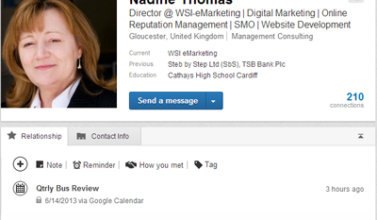
Blogs, social media and video are all parts of the digital marketing mix and they’re all aimed at increasing engagement. Engagement, which if successful can bring increased interest, brand awareness and loyalty and ultimately – sales!
So how do you get people to engage with you in a digital world? Well, one of the main areas is content. You may already know about content marketing and its importance in the online world. You may already have a blog and share the posts on social media, but have you really thought about the content you’re putting out there? Is it talking to the right people? Is it saying the right thing?
The information you are publishing, posting and emailing needs to be relevant to your audience for them to be engaged. Are all your posts case studies or good news stories about you and how good you are? Just take a minute to think whether that’s what your customers and potential customers are looking for. Is that why people look for you online? Well, it may be for some, especially if they’ve already decided that they need your service or product. Finding out whether you or your product or service is any good is the next logical step. But don’t forget, people won’t just be looking at your content to find out how good you are, after all, you would say you’re good wouldn’t you? Your online reputation will prompt a much wider search than you own website and content; third party review sites, business listings and general searches will all be part of any due diligence at this point. This, by the way, is something that many businesses take far too long to address.
But what about prospective customers and clients? They may not even know about you yet. They’ll be looking for the answer to their problem or question. Your blog content and social media posts need to address these problems and become a source of useful information for people. Advice, help and solutions will encourage engagement if it’s useful to the right people at the right time. To provide that content you need to know the sorts of problems and questions people have and how you can solve or answer them. And to do that you need to understand your existing customers. What were their problems? How did you solve them? Why do they stay with you? Put these things into context for other people who share the same issues. Speak to the problems you solve.
If you’re familiar with content marketing then again, you may already be aware that there are commonly 3 phases people go through when they’re looking for a solution
Awareness – Consideration – Purchase
Awareness
People are looking around and searching to see what’s out there that can solve their problem. They don’t know you, they just know they need to find something that’s going to help them. It may be a new software, a product or a service. It can even be as simple as a pair of shoes in the consumer retail world!
Consideration
The searcher has found one or more possible solutions. Now they are doing some further investigation. What can the software do? Will this product work? Does it do what I want it to do? How much will it cost? Where can I buy it (if retail)?
Purchase
I’ve found what I want. I have a solution and I’m sure it does everything I need it to. I know where I can get it and how much it should cost. Now, who should I buy it from?
To get engagement at each step of the way, your content needs to talk to all 3 stages; not forgetting, that often, the person tasked with the initial investigation may not be the person making the purchase decision. This is especially true in a business to business environment. So, you also need to tailor the tone and content to the correct type of person and talk in their language if you want them to engage with and ultimately buy from you.
For example, a young marketing executive may want to find a Marketing Automation system to allow the business to track people’s interactions and personalise further content based on those interactions. There are lots of solutions out there at different price points – the focus of the marketing executive is on the software and what it can do. However, the focus of the finance director who will be signing off the budget is, quite rightly elsewhere. He or she will need to have a clear business case for the cost versus the benefit or potential increase in revenue. In this instance having useful posts about the software and what it can do will talk to the marketing teams. An article about the about the cost benefits will talk to the finance team.
Drafting buyer personas will help you identify how diverse your content will need to be. If you want your readers to be engaged with you / your business, when it comes to content one size will definitely not fit all!
If having read this you think it’s time for a review of your digital marketing strategy, get in touch.
Related Post
What’s the single...
Adam Vincenzini from Comms Corner recently posted a very good article which I think goes...
- January 25, 2011
- By Rob Thomas
- Blogging
Content Sharing Via Social...
Target marketing to meet your business goals Is your business using social media channels...
- June 15, 2011
- By Nadine Thomas
- Digital Marketing
Brilliant Business Blogging
Blogging has long evolved from just being an ideal platform for enthusiasts and budding...
- August 9, 2011
- By Rob Thomas
- Blogging
Getting the Most from your...
LinkedIn is not only the most popular social network for professionals but with more than...
- November 22, 2012
- By Nadine Thomas
- Linked In
Can you get help to fund your...
If you need a new website, it’s possible that you could get help towards the cost....
- May 30, 2013
- By Rob Thomas
- Digital Marketing
10 Best Ways to take...
Others may have seen a pop-up ‘invitation to upgrade’ message when they accessed...
- June 1, 2013
- By Rob Thomas
- Digital Marketing











Leave a Comments